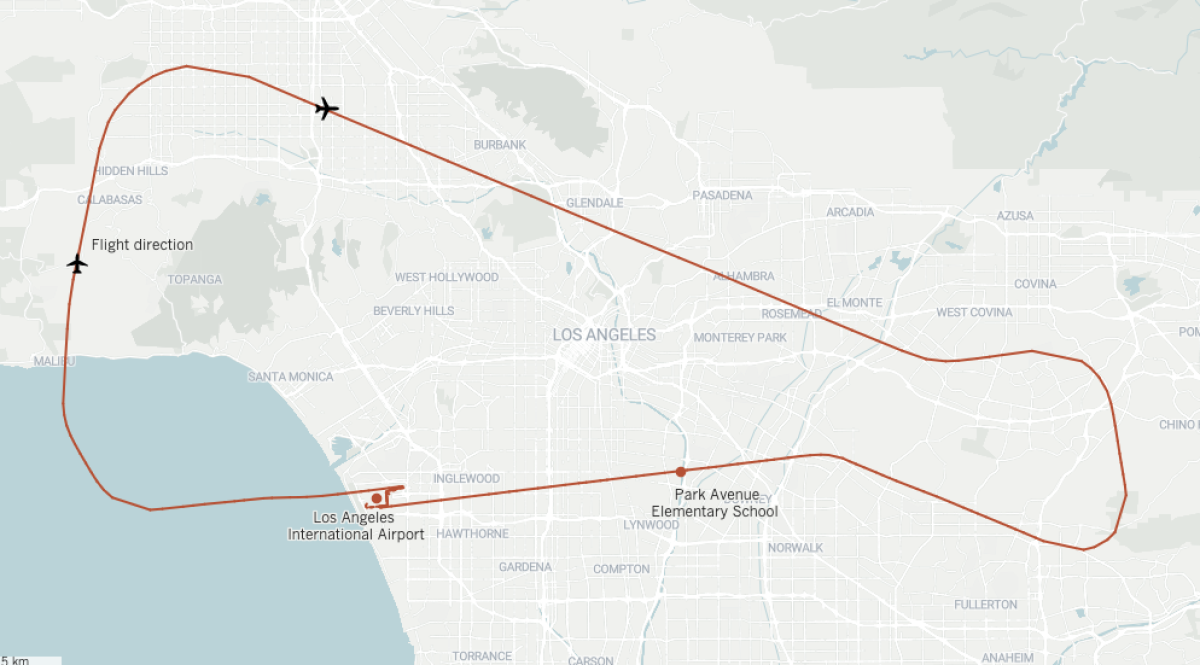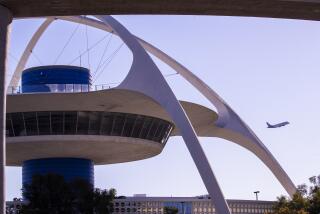Pilots are supposed to dump jet fuel in unpopulated areas, not over neighborhoods

- Share via
To make an emergency landing, a pilot will try to get the airplane down to its landing weight so there are more options in case of an aborted landing attempt. How and where that fuel dump happens depends on the type of emergency, said Tom Haueter, former director of the National Transportation Safety Board’s Office of Aviation Safety.
The Federal Aviation Administration and most airlines want pilots to dump fuel over an unpopulated area, such as an ocean, said Douglas Moss, aviation consultant and a retired United Airlines pilot.
That point was also made in a statement issued Tuesday by the FAA.
“The FAA is thoroughly investigating the circumstances behind today’s incident involving a Delta Airlines flight that was returning to Los Angeles International Airport. There are special fuel-dumping procedures for aircraft operating into and out of any major U.S. airport. These procedures call for fuel to be dumped over designated unpopulated areas, typically at higher altitudes so the fuel atomizes and disperses before it reaches the ground,” the agency said in a statement.

Pilots will typically alert air traffic controllers of the emergency fuel release and the air traffic controllers will try to direct the plane, said Haueter, who now serves as a consultant on aviation safety and accident investigations.
The drop will typically happen at an altitude of 5,000 feet so the fuel vaporizes before hitting the ground. But if there is a severe emergency, plans may change. “The real key is to know what’s the nature of the emergency,” Haueter said.
According to Flightradar24, Tuesday’s flight never got above 8,000 feet, and was at about 2,300 feet when it passed over Park Elementary School in Cudahy at 11:53 a.m. The plane showered jet fuel on school children.
Delta Flight 89 — a Boeing 777 — had taken off from LAX with 149 passengers on board and was en route to Shanghai when it turned around and headed back to the L.A. airport due to engine trouble.
The flight is typically a 13-hour nonstop. This one lasted about 25 minutes.
In an emergency, the captain is “authorized to break any rule in the book,” Moss said. “He still tries to adhere to as many of the rules as he can, but the bottom line is his actions must be in the best interest of safety.”
Ross Aimer, chief executive of Aero Consulting Experts, said fuel dumping is very rare.
“I don’t remember anyone dumping fuel over population,” he said.
More to Read
Sign up for Essential California
The most important California stories and recommendations in your inbox every morning.
You may occasionally receive promotional content from the Los Angeles Times.












